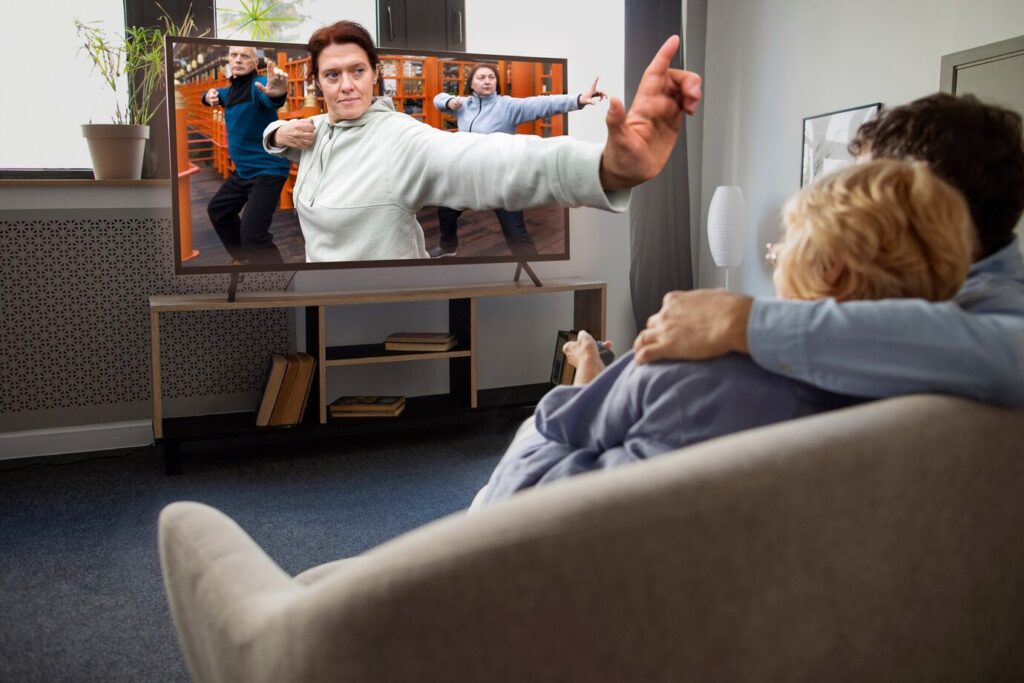Introduction
Home technology terms can be confusing, with labels like “AV guy,” systems integrator, or technology designer all meaning roughly the same thing. This identity confusion extends to how we name rooms in the house. Homeowners often use “media room” and “home theater” interchangeably, but for designers and builders, knowing the difference is key for clear communication. Understanding these terms can help better define a project and vision.
Ideas for a Home Theater
A home theater is a special room designed to provide the best possible movie-watching experience. It’s like a mini-cinema in your home. To achieve this, the room is made as dark as possible, often without windows or with special curtains that block out all light. This helps the picture on the screen look its best.
-
Size of the image
You have additional choices regarding image size in a specialized theater setting because you can fully manage your surroundings. You have access to larger screens and video projectors since they work well in settings with controlled lighting. Because if a room isn’t multipurpose, homeowners are more likely to let a projection screen occupy a significant amount of their wall space.
-
Acoustic restoration
Home theaters are specially designed for sound quality, often featuring acoustic treatments and construction techniques to control noise. These rooms are optimized for an immersive audio experience, with surround sound that is far superior to what a media room can offer. Speakers can be hidden behind panels or placed prominently without disrupting the room’s purpose. This level of sound quality wouldn’t be practical in a shared space like a kitchen or great room, which is why dedicated home theaters exist.
-
Seating
The seats in a home theater are designed to be comfortable for long movie nights. They’re often raised up so everyone has a clear view of the screen, no matter where they sit. The equipment, like the TV or projector, is usually placed in a way that it’s easy to see and control. Sometimes, the equipment is kept in a separate room or cabinet.
For all of these reasons, a home theater is frequently incorporated into a floor plan at the early stages of a home’s design or installed in an enclosed “bonus” space, like a basement, garage, or spare bedroom. An incredible, meticulous experience created solely for entertainment is the outcome of a dedicated home theater space.
The Components of a Media Room
A media room is a more casual space where you can watch movies or TV shows. It’s not as fancy as a home theater, and it’s okay if there’s some light coming in. The sound system is usually simpler, and the seating is more comfortable for relaxing. It’s a good place to hang out with friends and family.
Media rooms usually don’t have sound isolation or acoustic treatments, though some stylish options can be used like artwork. The audio setup is typically smaller, with soundbars or in-wall speakers that offer a sense of surround sound. Unlike home theaters, media rooms have flexible seating arrangements, making them great for various activities, like entertaining guests or watching sports. Their adaptability allows them to fit into spaces like living rooms, game rooms, or open floor plans, making them more versatile than dedicated home theaters.
Conclusion
This is the ideal moment to speak with a home technology specialist if you’re designing a media room or home theater. Early expert involvement guarantees smooth technological integration. Uncertain if a home theater or media room is the best option for your area? While home theaters provide a specialized, immersive experience, media rooms are more adaptable and appropriate for multifunctional spaces. Get in touch with us, and we’ll be pleased to assist you in selecting the finest choice for your house.


